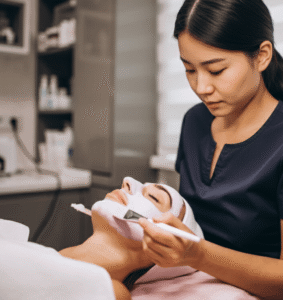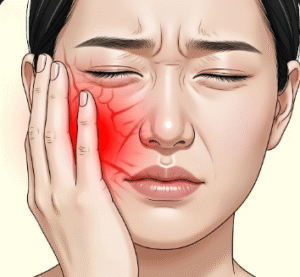Overview
A Pill-Rolling Tremor is a characteristic type of involuntary hand movement commonly associated with Parkinson’s disease. The term “pill-rolling” describes the motion of the thumb and index finger moving together, as if rolling a small object or pill between them. This tremor is usually most noticeable at rest and may diminish during purposeful movements. Understanding pill-rolling tremor is essential for early recognition of Parkinsonian syndromes and for planning appropriate interventions.
➤ Pill-rolling tremor typically begins in one hand and may eventually affect both hands.
➤ It is most pronounced at rest and may decrease with voluntary movement.
➤ Early diagnosis is crucial, as it can lead to timely management of Parkinson’s disease and related conditions.
Korean neurology clinics provide advanced diagnostics, imaging, and therapeutic strategies to evaluate and manage pill-rolling tremors effectively.
Key Facts
➤ A pill-rolling tremor is a resting tremor characterized by circular movements of the thumb and fingers.
➤ It is most commonly associated with Parkinson’s disease, although other neurological disorders may present similarly.
➤ Tremors may start unilaterally and gradually progress to both hands.
➤ Other Parkinsonian symptoms often appear alongside tremors, such as rigidity, bradykinesia, and postural instability.
➤ Korean neurology centers offer specialized movement disorder clinics with expert evaluation and treatment plans.
What is a Pill-Rolling Tremor?
A pill-rolling tremor is defined as a specific type of involuntary, rhythmic movement of the fingers and thumb, resembling the motion of rolling a small object between the thumb and index finger.
➤ Medical perspective: It is a resting tremor, typically 4–6 Hz in frequency, caused by dysfunction in the basal ganglia and dopaminergic pathways.
➤ Distinctive features:
➤ Rhythmic, circular finger movements.
➤ Appears when the hand is at rest and disappears with intentional movement.
➤ Often begins in one hand and may spread to the other side.
➤ Clinical significance: This tremor is considered a hallmark symptom of Parkinson’s disease, aiding in early diagnosis and differential assessment.
Understanding the nature of pill-rolling tremor is critical for neurologists to distinguish it from other tremor types, such as essential tremor or dystonic tremors.
What Symptoms Are Related To
Pill-rolling tremor is often accompanied by other Parkinsonian or neurological signs:
➤ Bradykinesia (slowness of movement) – difficulty performing routine tasks.
➤ Muscle rigidity – stiffness, particularly in the limbs and neck.
➤ Postural instability – balance issues and increased risk of falls.
➤ Shuffling gait – small steps and decreased arm swing.
➤ Micrographia – small and cramped handwriting.
➤ Facial masking – reduced facial expressions.
➤ Other tremor types – may develop in legs, jaw, or lips over time.
Recognizing these related symptoms helps clinicians confirm the presence of Parkinsonian syndrome and plan a comprehensive management strategy.
What Causes / Possible Causes
Pill-rolling tremor primarily results from dysfunction in the basal ganglia and dopamine deficiency, but several factors may contribute:
➤ Parkinson’s disease:
➤ Degeneration of dopamine-producing neurons in the substantia nigra.
➤ Disrupted communication within the basal ganglia leads to tremor and other motor symptoms.
➤ Secondary Parkinsonism:
➤ Drug-induced (antipsychotics or antiemetics).
➤ Vascular parkinsonism due to small vessel disease.
➤ Post-traumatic or post-infectious basal ganglia damage.
➤ Other neurological disorders:
➤ Multiple system atrophy (MSA).
➤ Progressive supranuclear palsy (PSP).
➤ Essential tremor (less characteristic, but may co-occur).
➤ Genetic predisposition:
➤ Family history of Parkinson’s disease may increase susceptibility.
Accurate diagnosis requires neurological assessment, imaging, and sometimes genetic testing to differentiate Parkinson’s disease from other tremor-causing conditions.
When Should I See My Doctor
It is essential to consult a neurologist if you notice a resting tremor resembling pill-rolling, particularly if accompanied by other Parkinsonian features:
➤ Persistent hand tremor at rest, especially if one hand is initially affected.
➤ Difficulty with fine motor tasks, such as buttoning shirts or writing.
➤ Muscle stiffness, slowed movements, or changes in gait.
➤ Balance problems or frequent falls.
➤ Family history of Parkinson’s disease or other movement disorders.
Early evaluation at specialized movement disorder clinics in Korea enables timely intervention and better management of disease progression.
Care and Treatment
Treatment of pill-rolling tremor focuses on managing Parkinson’s disease or the underlying cause, rather than eliminating the tremor alone:
➤ Medications:
➤ Dopamine replacement therapy (e.g., levodopa/carbidopa).
➤ Dopamine agonists or MAO-B inhibitors to enhance dopaminergic function.
➤ Anticholinergic medications for tremor control in some cases.
➤ Physical therapy and occupational therapy:
➤ Exercises to improve balance, coordination, and flexibility.
➤ Training to maintain independence in daily activities.
➤ Lifestyle modifications:
➤ Regular physical activity to improve mobility and reduce rigidity.
➤ Stress reduction techniques, as stress can exacerbate tremors.
➤ Surgical options (in advanced cases):
➤ Deep brain stimulation (DBS) targeting basal ganglia structures.
➤ Lesioning procedures for refractory tremors.
➤ Monitoring and follow-up:
➤ Regular neurological evaluations to adjust therapy and monitor progression.
Treatment Options in Korea
Korea offers advanced, multidisciplinary care for patients with pill-rolling tremor and Parkinson’s disease:
➤ Movement disorder clinics – comprehensive evaluation by neurologists specializing in Parkinson’s disease.
➤ Advanced imaging and diagnostics – MRI, DaTscan, and other tests to assess basal ganglia function.
➤ Medication management programs – personalized pharmacological therapy for tremor and other symptoms.
➤ Rehabilitation services – physical, occupational, and speech therapy to maintain functional independence.
➤ Surgical interventions – deep brain stimulation and minimally invasive procedures for severe tremors.
➤ Follow-up and long-term care – ensuring optimal quality of life and symptom control.
Patients in Korea benefit from highly skilled specialists, modern hospital infrastructure, and coordinated care, ensuring effective management of pill-rolling tremor and associated Parkinsonian symptoms.













